Abstract
Over 20 gram-positive bacteria were isolated by elective culture with (+/-)-alpha-pinene as the sole carbon source. One of these strains, Nocardia sp. strain P18.3, was selected for detailed study. alpha-Pinene-grown cells oxidized, without lag, alpha-pinene, alpha-pinene oxide (epoxide), and the cis and trans isomers of 2-methyl-5-isopropylhexa-2,5-dienal. No other tested terpene was oxidized at a significant rate. alpha-Pinene was not metabolized by cell extracts in the presence or absence of NADH or NADPH. Cell extracts catalyzed a rapid decyclization of alpha-pinene oxide, in the absence of added cofactors, with the formation of cis-2-methyl-5-isopropylhexa-2,5-dienal. Further oxidation of the aldehyde to the corresponding acid occurred in the presence of NAD. Both activities were induced by growth with alpha-pinene. A rapid, nonenzymic transformation of the cis aldehyde into the trans isomer occurred in glycine buffer. The trans isomer was also a substrate for the NAD-linked aldehyde dehydrogenase. The distribution of the alpha-pinene oxide lyase in alpha-pinene-utilizing Pseudomonas spp. was also investigated and was compatible with the two alternative ring-cleavage sequences that have been proposed on the basis of accumulated metabolites.
Full text
PDF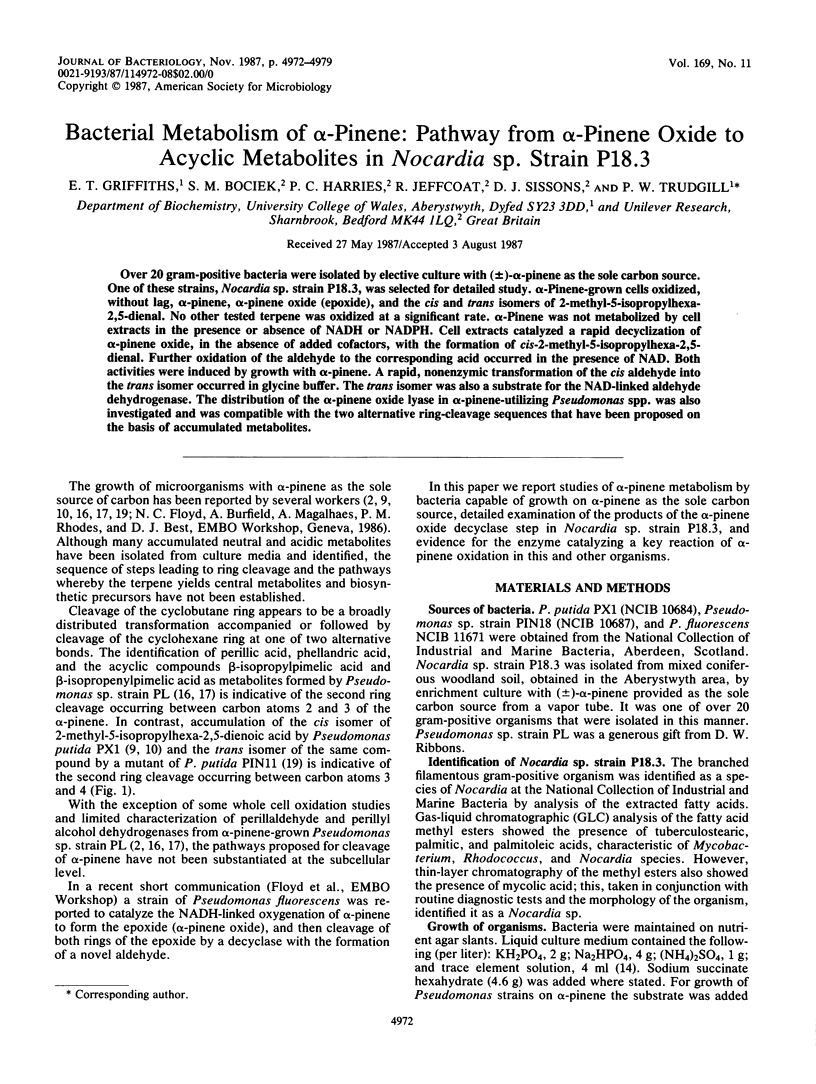
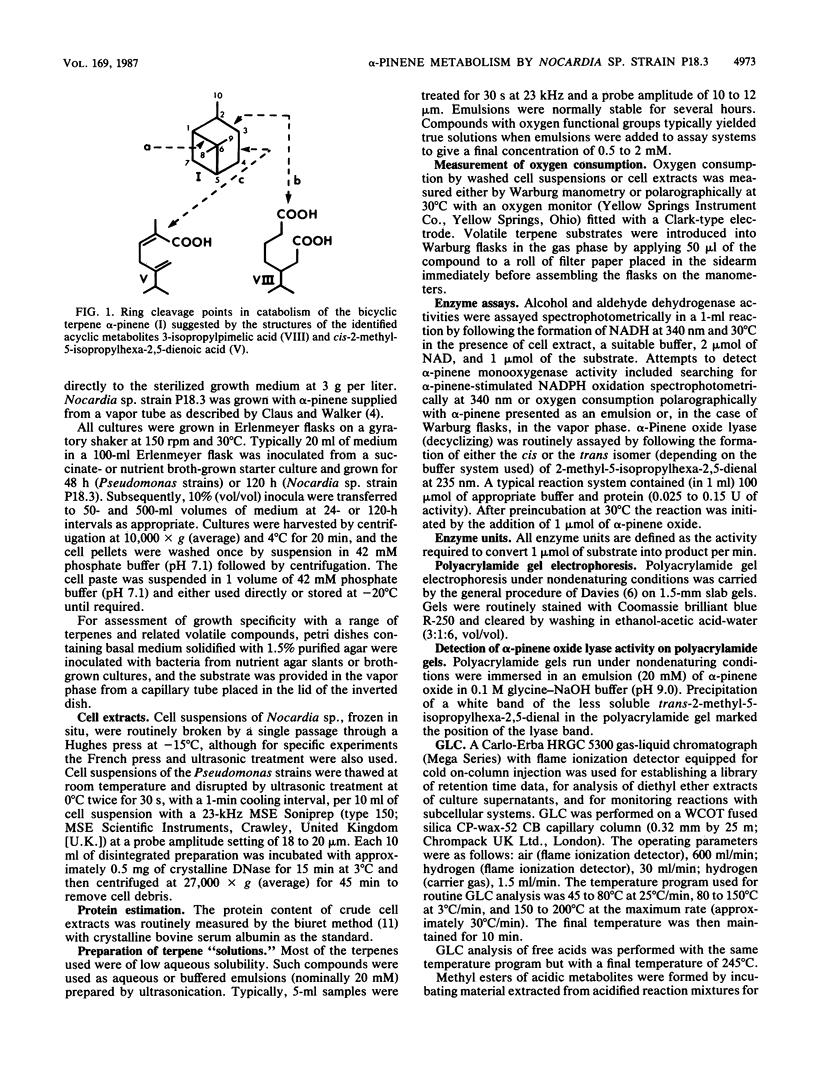
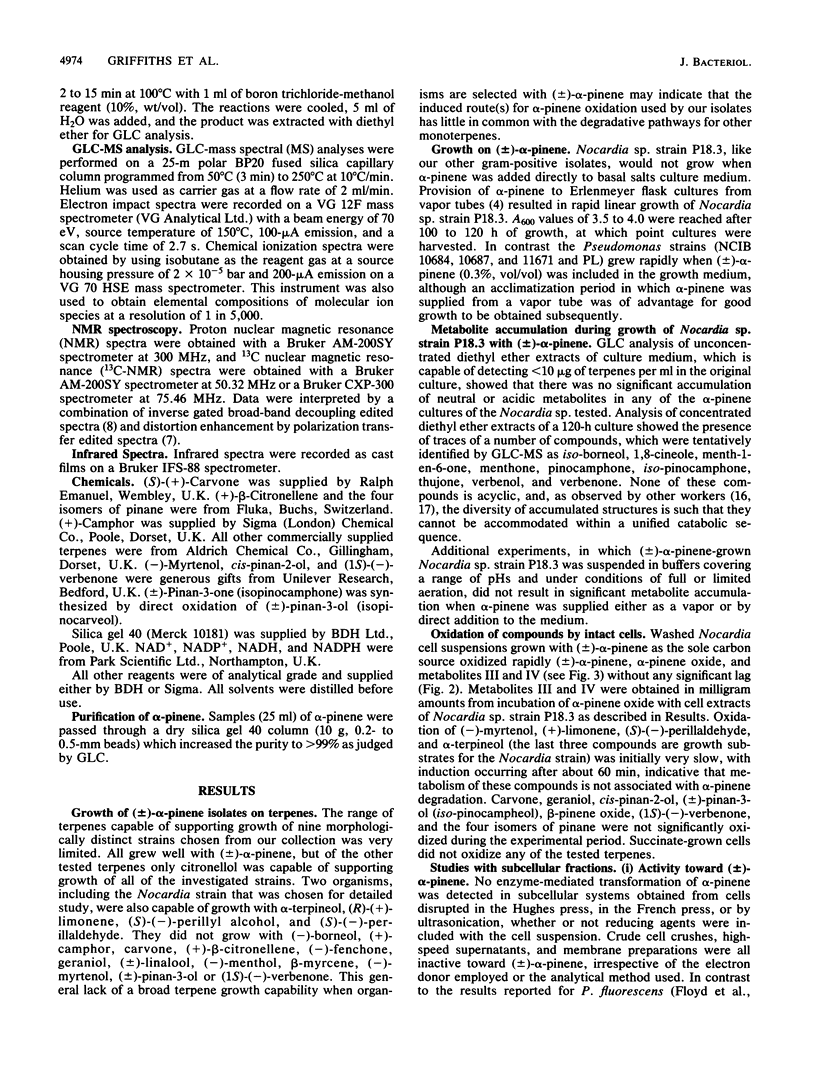
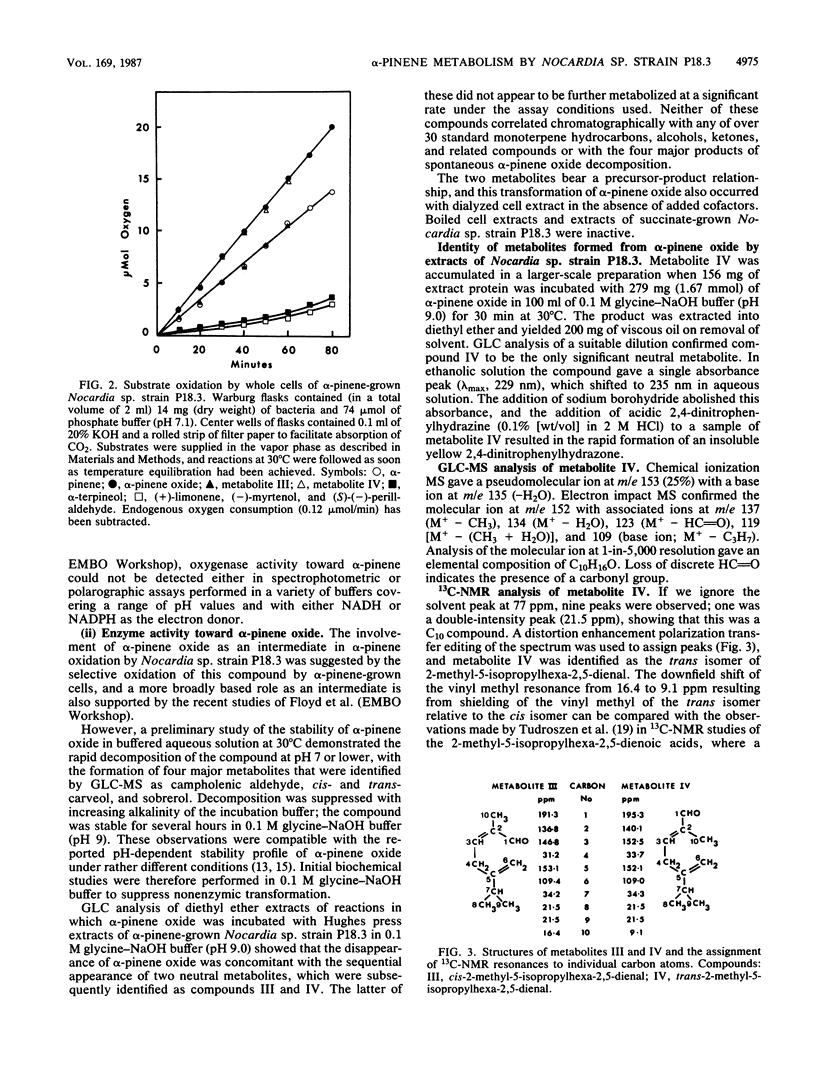

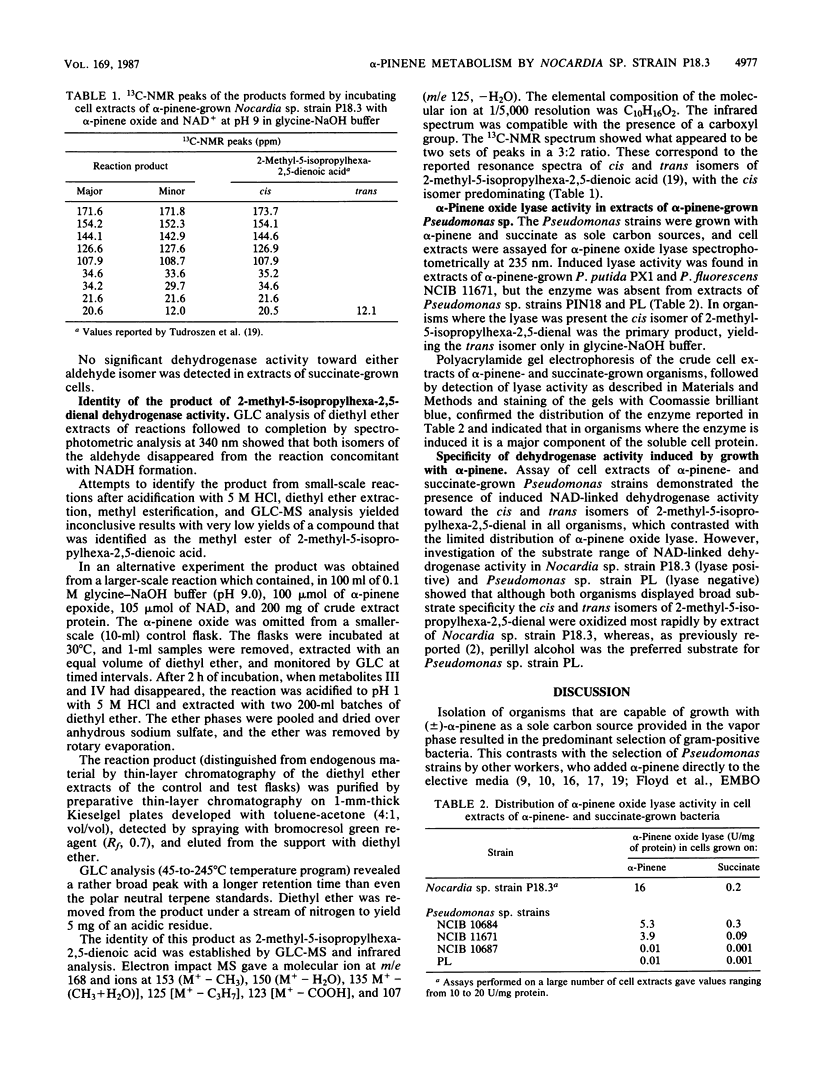
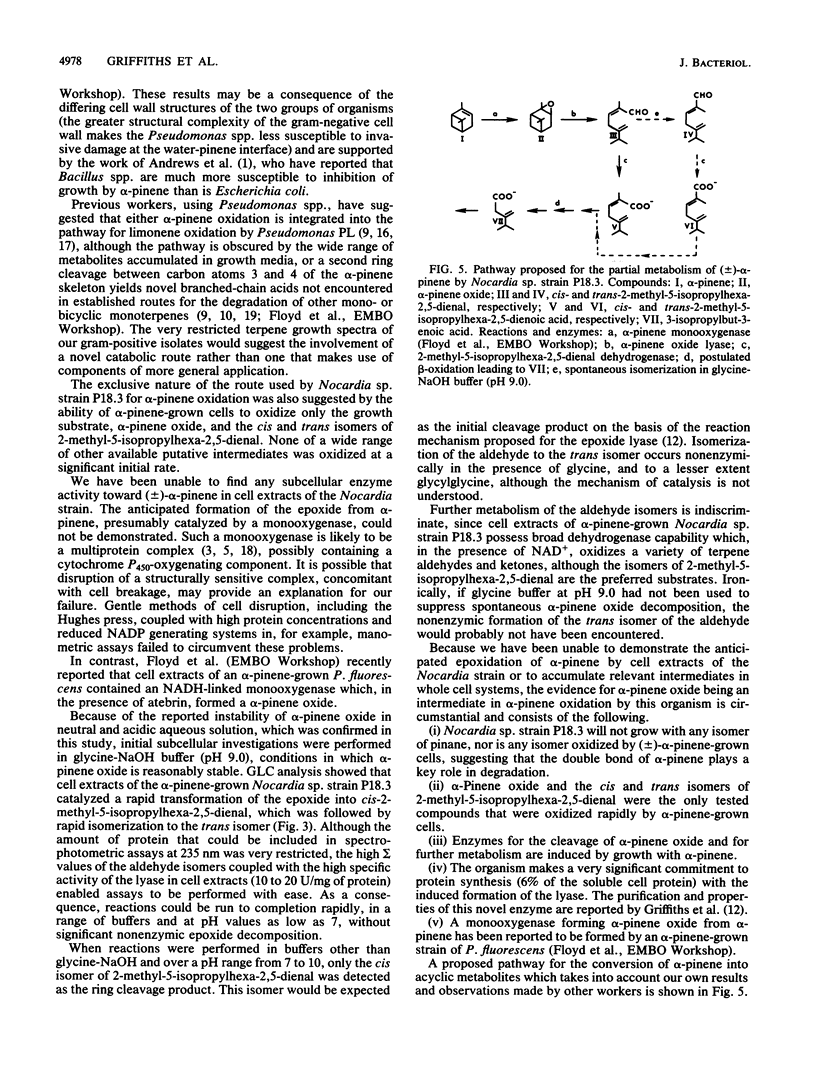
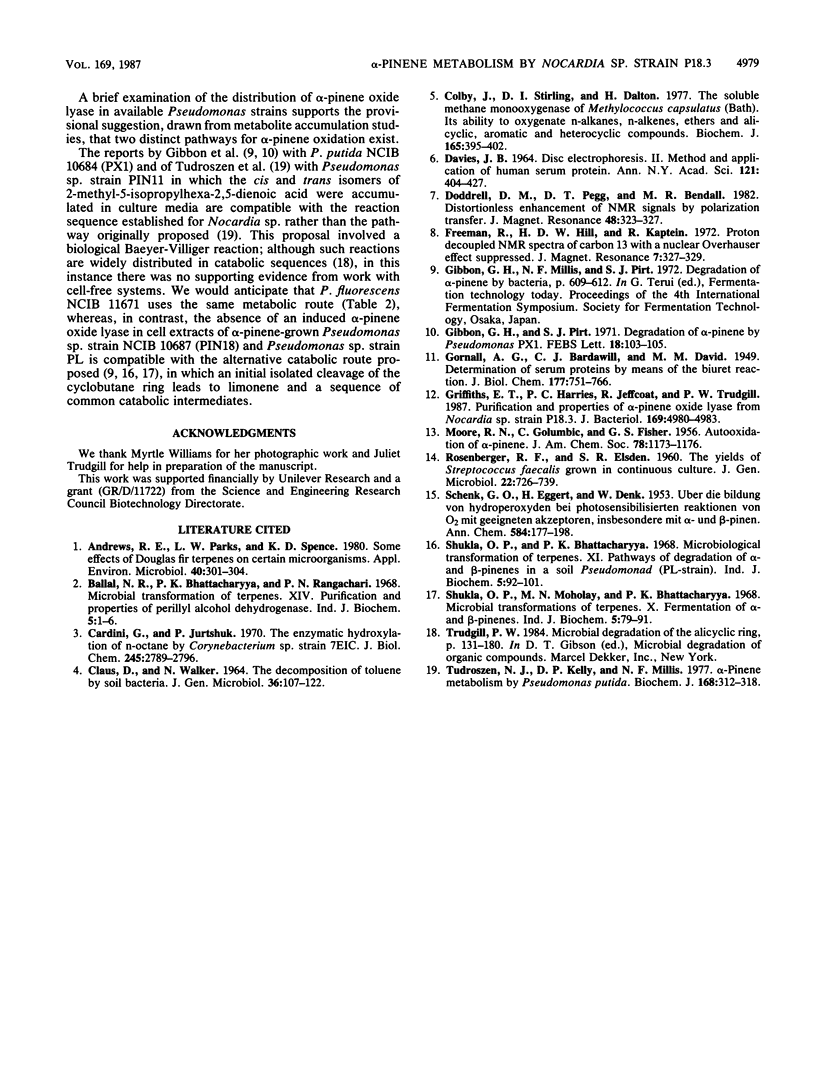
Selected References
These references are in PubMed. This may not be the complete list of references from this article.
- Andrews R. E., Parks L. W., Spence K. D. Some effects of douglas fir terpenes on certain microorganisms. Appl Environ Microbiol. 1980 Aug;40(2):301–304. doi: 10.1128/aem.40.2.301-304.1980. [DOI] [PMC free article] [PubMed] [Google Scholar]
- Ballal N. R., Bhattacharyya P. K., Rangachari P. N. Microbiological transformations of terpenes. XIV. Purification & properties of perillyl alcohol dehydrogenase. Indian J Biochem. 1968 Mar;5(1):1–6. [PubMed] [Google Scholar]
- CLAUS D., WALKER N. THE DECOMPOSITION OF TOLUENE BY SOIL BACTERIA. J Gen Microbiol. 1964 Jul;36:107–122. doi: 10.1099/00221287-36-1-107. [DOI] [PubMed] [Google Scholar]
- Cardini G., Jurtshuk P. The enzymatic hydroxylation of n-octane by Corynebacterium sp. strain 7E1C. J Biol Chem. 1970 Jun 10;245(11):2789–2796. [PubMed] [Google Scholar]
- Colby J., Stirling D. I., Dalton H. The soluble methane mono-oxygenase of Methylococcus capsulatus (Bath). Its ability to oxygenate n-alkanes, n-alkenes, ethers, and alicyclic, aromatic and heterocyclic compounds. Biochem J. 1977 Aug 1;165(2):395–402. doi: 10.1042/bj1650395. [DOI] [PMC free article] [PubMed] [Google Scholar]
- DAVIS B. J. DISC ELECTROPHORESIS. II. METHOD AND APPLICATION TO HUMAN SERUM PROTEINS. Ann N Y Acad Sci. 1964 Dec 28;121:404–427. doi: 10.1111/j.1749-6632.1964.tb14213.x. [DOI] [PubMed] [Google Scholar]
- Gibbon G. H., Pirt S. J. The degradation of alpha-pinene by Pseudomonas PX1. FEBS Lett. 1971 Oct 15;18(1):103–105. doi: 10.1016/0014-5793(71)80418-0. [DOI] [PubMed] [Google Scholar]
- Griffiths E. T., Harries P. C., Jeffcoat R., Trudgill P. W. Purification and properties of alpha-pinene oxide lyase from Nocardia sp. strain P18.3. J Bacteriol. 1987 Nov;169(11):4980–4983. doi: 10.1128/jb.169.11.4980-4983.1987. [DOI] [PMC free article] [PubMed] [Google Scholar]
- ROSENBERGER R. F., ELSDEN S. R. The yields of Streptococcus faecalis grown in continuous culture. J Gen Microbiol. 1960 Jun;22:726–739. doi: 10.1099/00221287-22-3-726. [DOI] [PubMed] [Google Scholar]
- Tudroszen N. J., Kelly D. P., Millis N. F. alpha-Pinene metabolism by Pseudomonas putida. Biochem J. 1977 Nov 15;168(2):315–318. doi: 10.1042/bj1680315. [DOI] [PMC free article] [PubMed] [Google Scholar]


